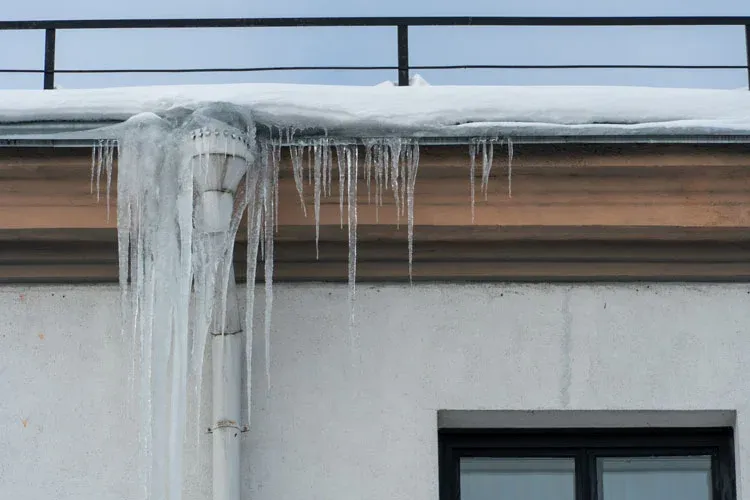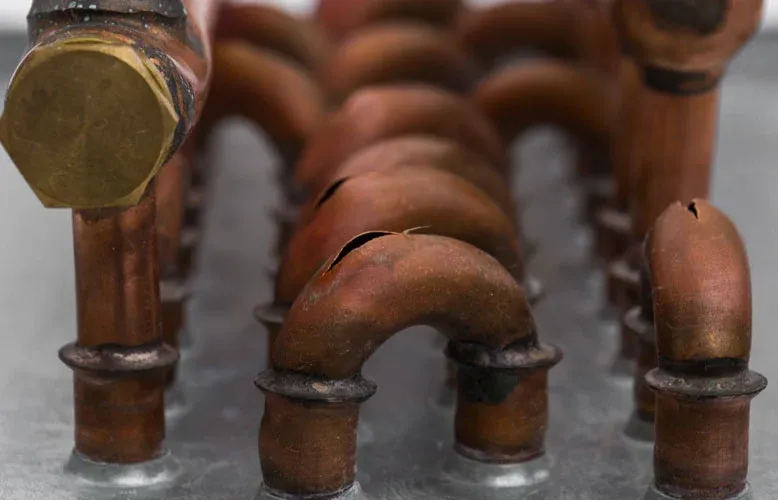Even the more mild desert winters are no stranger to frozen pipes. While temps may warm up during the day, they often plummet at night. Without the proper preparation, pipes will inevitably freeze a few times per winter.
So, how do you avoid the damage that can occur when pipes are frozen? How should you best protect exposed pipes? And how do you go about repairing pipes exposed to cold weather?
In this blog, Al Coronado Plumbing, Tucson’s #1 rated plumber, discusses the most commonly asked questions around freezing pipes.
How to Thaw Frozen Pipes Underground?
Underground lines are typically more protected from the environment, but they can still fall prey to freezing temperatures. If warmed back up improperly, underground pipes can cause some of the most extensive damage.
In the case that you are unable to access the outside of the pipe and thaw slowly from the exterior with an electric heating pad, gentle propane heater, or space heater, it is recommended to pump warm (not hot!) water into the service line with flexible tubing that can be inched forward as the ice melts.
We recommend calling professionals if this technique does not get your water flowing smoothly again. If accessing your pipes, such as in tight or unsafe crawl spaces, proves difficult, it’s best to enlist the help of an expert. There may be unknown system issues that are particularly difficult to diagnose in underground pipes.
Should I Turn Off the Water if the Pipes Freeze?
If you’re going to be away during cold weather, it’s a good idea to turn off the water and drain the lines before heading out. This will prevent stagnant water in the pipes from freezing and causing destruction while you’re away.
If the pipes have already frozen, it is still a good idea to turn off the water and turn on a few faucets to allow the water to drain from the system as temperatures warm and the ice thaws out. If, after some time, there is no drainage and water continues not to flow, it’s time to call in the professionals.
How to Locate a Frozen Pipe?
Start by checking each faucet. If any taps have little or no water pressure, it’s likely because of a frozen pipe in their supply line. If every faucet seems to have low water pressure, the frozen pipe is more likely close to the master source, the water meter.
Once you’ve narrowed down which pipes are the likely culprit, move on to determine where within the pipe is frozen.
How to tell Where a Pipe is Frozen?
Once you’ve narrowed down which part of the system the frozen pipe is probably located in, start looking for signs of freezing. If there’s no obvious frost on the outside, look for areas of condensation. As water freezes, it expands, making it possible to see bulging areas of pipe or even small cracks in the pipes infrastructure. You might also be able to smell an odor coming from the frozen pipe, or the faucets it is attached to.
If there are no outward signs of freezing, trying feeling the pipe with your hands to determine where the ice is concentrated. Keep in mind that multiple pipes or areas in the pipe can freeze at once. If applying warm air to combat the cold air doesn’t do the trick easily, it’s a good idea to call professionals before damage ensues.
Can Frozen Pipes Cause Drain Clog?
If it’s cold out and your sink or shower suddenly isn’t draining, frozen pipes could be the culprit. While we typically think of frozen pipes effecting the flow of water into our home, they can also effect our drainage systems.
Before you go pouring Drano down your pipes to no avail, try warm water. You may need to bring the warm water from another source than the effected sink or shower, as water usually comes out cold at the start before heating up, and by that time your water may already be backing up.
If you’re unsure what’s causing your clogged drains, call the Al Coronado Plumbing team. We have drain snakes and pipe cameras on hand to accurately find and treat your plumbing problem.
How to Fix Frozen Pipes?
If you’ve located the source of the freeze and are able to access the pipe it’s coming from, there are a variety of options to get things moving again. You can use an electric heating pad wrapped around the pipe, towels soaked in hot water applied to the pipe, a portable space heater or multiple space heaters pointed at the offending area, or even an electric hair dryer to provide warmer air when a pipe freezes.
How to Prevent Frozen Pipes?
To avoid frozen pipes in the first place, wrapping exterior pipes you can access is an excellent place to start. Check around the home for other areas where water supply lines are located in unheated areas. Look in the garage and under the kitchen and bathroom cabinets. Both hot and cold water pipes in these areas should be insulated.
In addition, find which faucets your external pipes provide water to and leave those faucets dripping (cold water will still prevent freezing) to keep things flowing.
Call Al Coronado Plumbing
There’s a reason Al Coronado Plumbing is Tucson’s trusted plumber. We value quality, honesty, cleanliness, and professional customer plumbing experience.
Al Coronado knows your time is valuable. Our fast and convenient Tucson Plumbing services aim to get you back up and running as soon as possible. From start to finish, you and your family are at the top of our Tucson Plumbers’ priority list.
Learn more and contact us today with a visit to our website.

